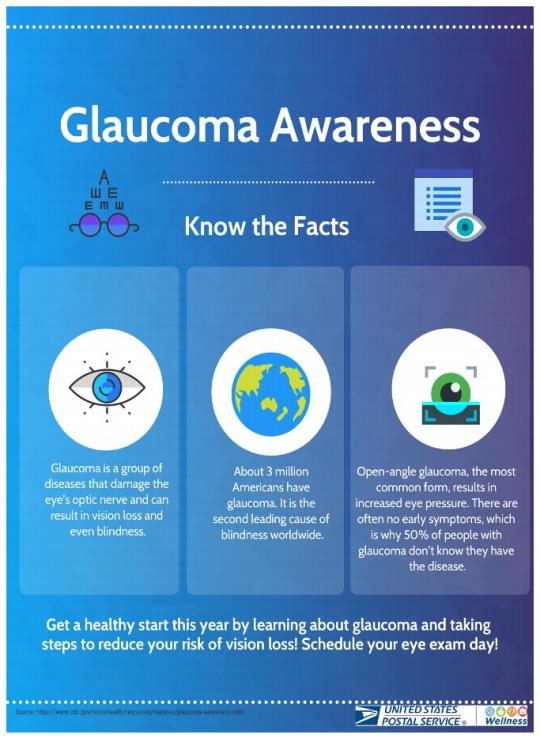Vision loss from glaucoma usually first affects peripheral vision. Peripheral vision is what you can see on the side of your head when looking ahead. Later, it will affect your central vision, which is needed for seeing objects clearly and for common daily tasks like reading and driving. There are many steps you can take to help protect your eyes and lower your risk of vision loss from glaucoma1:
n If you are in a high-risk group, get a comprehensive dilated eye exam to catch glaucoma early and start treatment. Prescription eye drops can stop glaucoma from progressing. Your eye care specialist will recommend how often to return for follow-up exams. Medicare covers a glaucoma test once a year for people in high-risk groups.
n Even if you are not in a high-risk group, getting a comprehensive dilated eye exam by the age of 40 can help catch glaucoma and other eye diseases early.
n Open-angle glaucoma does not have symptoms and is hereditary, so talk to your family members about their vision health to help protect your eyes — and theirs.
n Maintaining a healthy weight, controlling your blood pressure, being physically active, and avoiding smoking will help you avoid vision loss from glaucoma. These healthy behaviors will also help prevent type 2 diabetes and other chronic conditions.
Glaucoma is treated with eye drops, oral medicine, or surgery (or a combination of treatments) to reduce pressure in the eye and prevent permanent vision loss. Take medicine as prescribed and tell your eye care specialist about any side effects. You and your doctor are a team. If laser or surgical procedures are recommended to reduce the pressure in your eye, make sure to schedule regular follow-up visits to continue to monitor eye pressure.
— Benefits and Wellness,
Human Resources, 1-12-23

